
Flying to Korea
Resuming my global art fair circuit, I couldn’t help but feel a thrill of excitement when my flight finally touched down at Incheon Airport—as if I were setting foot abroad for the very first time. Perhaps it was the sheer effort it took to get to Korea from the UK, a journey that spanned an arduous four weeks.
A week before my flight, I found myself in the relentless routine of queueing at the visa center, twice a day, every day at 10 a.m. and 3 p.m. There, I joined a sea of hopefuls, all of us vying for that elusive visa. After changing my flight twice, making 12 trips to the visa center, and being absorbed into a WeChat group titled “Korea Visa – GO FOR IT,” with 80 equally desperate souls, I finally secured my visa the day before the VIP preview of the inaugural Frieze Art Fair in Seoul. I caught the earliest flight possible but still missed out on a slew of crucial pre-fair events.

Long queues for visa collection outside the visa center in London
In retrospect, those ten hours spent at the visa center were not in vain. Some of my art world acquaintances, who had applied for their visas earlier, grew impatient and withdrew their applications. Meanwhile, a few London-based collectors “saved money” on Frieze Seoul by skipping the trip altogether due to visa complications.
South Korea, despite its cultural ambitions, fell short on providing the most basic service—visa accessibility. This made my colleagues wonder: Could the Korean art market truly eclipse Hong Kong and Mainland China as Asia’s leading hub, as we all anticipated?
The only way to answer such a question was to witness the scene firsthand. Arriving in Seoul just an hour before the VIP preview, I quickly realized that the age-old adage “playing hard to get” holds true in all aspects of life, especially in the art world. The more elusive something is, the more desirable it becomes—whether it’s a visa or an artwork. Galleries play the same game: the harder it is to acquire a piece, the more you crave it. Persistence may be grueling, but with a deep enough wallet, patience eventually pays off.

Seoul cityscape
Seasoned collectors are well-versed in these gallery strategies, but this time, as a nod to the burgeoning Korean market, many galleries reserved their prime offerings for local institutions. New collectors found themselves back on the waiting list—a tactical move considering the clout of Korean institutions, especially those backed by the country’s corporate giants.

Samsung Museum of Art
According to a 2015 Larry’s List report, South Korea had already surpassed the U.S. and Germany in the number of private art museums. This boom is largely attributed to favorable tax policies and the ‘cultural nation’ strategy initiated by President Kim Dae-jung in 1998. There’s even talk that the recent K-Art surge, following the global K-Pop phenomenon, was partly fueled by the fact that the current First Lady was, at one time, an art curator. However, it turns out this narrative was overblown—her curatorial experience was exaggerated to land a better job while working part-time.
While the First Lady’s influence may be overstated, the impact of celebrity collectors like RM of BTS, G-Dragon, and T.O.P is undeniable. One event I regretted missing was the star-studded party hosted by CJ Group at the Leeum Samsung Art Museum. It drew not only the crème de la crème of Korean society but also the Western art elite, all of whom were surprisingly eager to post their glamorous escapades on Instagram.

Above: Chang-Yeol Kim x Bang & Olufsen Limited Audio
Below: Park Seo-Bo x Alessi Kitchenware
Samsung, Hyundai, Amore Pacific, and Lotte have all invested in integrating highbrow art into everyday life, making it more accessible to the public. Lotte Department Store, for instance, has reimagined the shopping experience by launching an art and craft fair featuring collaborations between renowned artists and luxury brands. Amore Pacific’s headquarters houses an art museum that merges art with daily life, offering visitors everything from personalized cosmetic consultations to world-class exhibitions, like the Andreas Gursky show that coincided with Frieze.
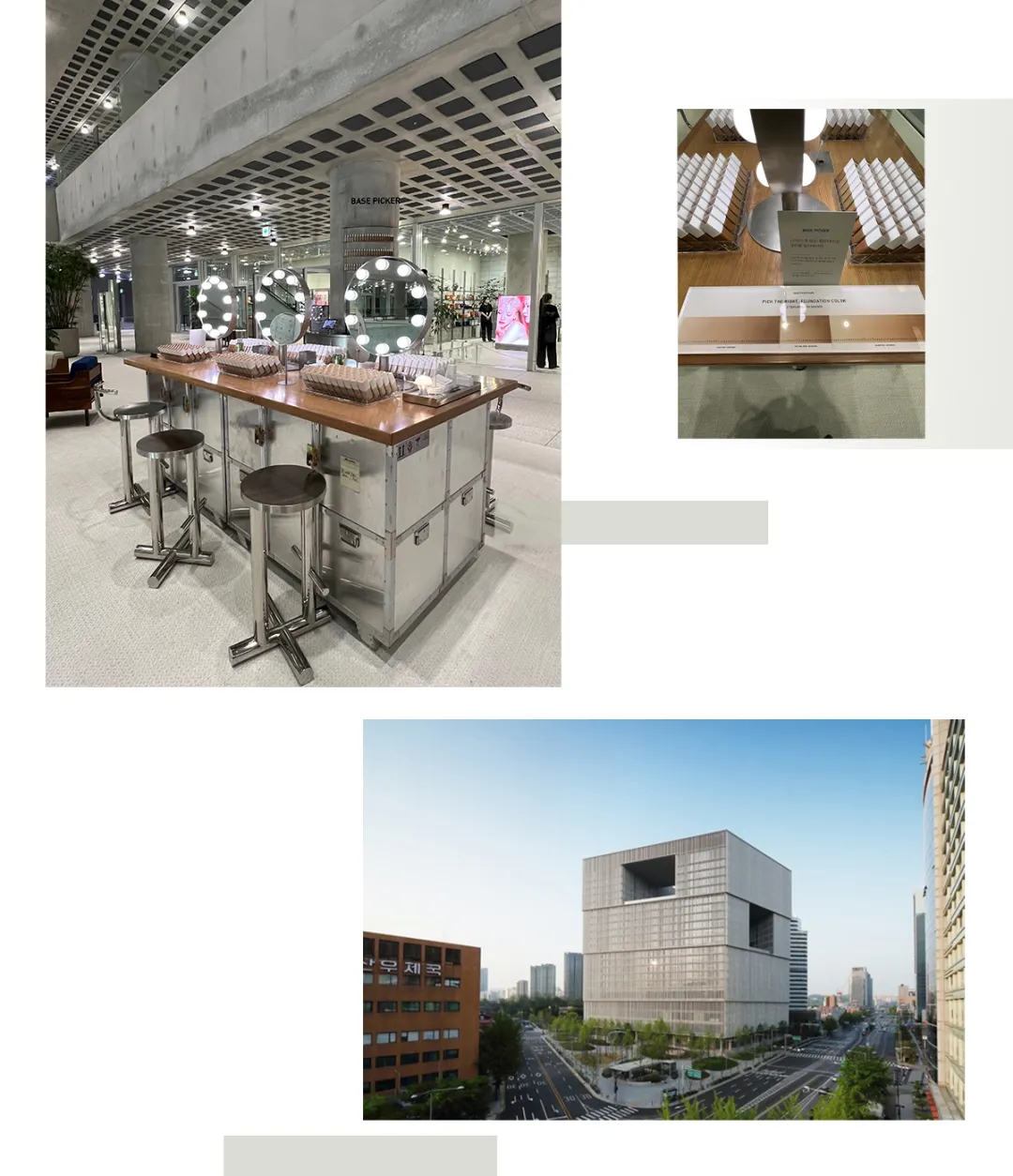
Top left: Amore Pacific’s foundation testing station
Top right: Amore Pacific’s foundation shade
Below: The building of Amore Pacific
What left the strongest impression on me was the Leeum Samsung Museum of Art. While its collection may not rival that of the Forbidden City or the British Museum in terms of traditional art and antiquities, its cutting-edge technology provides an advanced viewing experience. Unlike Western museums, which still rely on manually operated audio guides, Samsung’s guide system automatically plays engaging narrations as you approach each work, complete with a soundtrack that enhances the experience. The museum also employs AR technology from Acute Art, turning the exhibition into an interactive treasure hunt.

Above: Exhibits at Samsung Museum of Art
Next: Experiencing the intelligent audio guide
Korea’s tax advantages have not only expanded corporate collections but also nurtured a new generation of collectors. One such figure is Teo Yang, an internationally renowned Korean interior designer and collector. Teo explained that this new wave of collectors is a recent phenomenon, driven by the rise of tech billionaires, favorable tax policies, and a sagging real estate market. The surge in auction records for Korean artists like Park Seo-Bo and Lee Ufan has further boosted local collectors’ confidence, creating a market that equally values local and Western contemporary art.

Above: Me and Teo Yang
Below: Teo’s home in Seoul
Art education is deeply embedded in Korean culture, with children starting art lessons as early as kindergarten. This widespread cultural literacy was evident during Frieze Seoul, where the public’s enthusiasm and knowledge of art left Western gallerists impressed. Wendy Xu of White Cube Gallery noted that Korean fairgoers were notably different from their mainland Chinese counterparts, with many arriving well-prepared, having researched the artists and exhibitions beforehand.

Above: Kukje Gallery designed by Teo Next: Kukje Gallery presents Lee Seung Jio’s solo exhibition
Timothy Taylor, a London gallery owner, also observed the cultural sophistication of Korean collectors, evident not only in their buying habits but also in their style and taste. Unlike in Hong Kong or mainland China, where transactions are often completed during the VIP preview, Korean collectors take their time, making thoughtful decisions over the course of the fair.

Top left and top right: Math Bass works from Frieze Various Small Fires and other booths Below: Me in front of Liu Wei’s work at the White Cube Gallery booth
Teo Yang revealed an intriguing aspect of the Korean art scene—a spontaneous, organic community of collectors who connect via Instagram and KAKAO TALK, the local version of WeChat. This community is inclusive, with no strict criteria for membership, making it accessible to new collectors and enthusiasts alike. Teo recently acquired a work by Hejum Ba from the gallery Whistle, thanks to this close-knit network. Unlike the often intimidating art scenes in Europe or the U.S., Seoul’s art community feels refreshingly approachable.

A crowded scene at Frieze
The enthusiasm for art was palpable, even in the face of a typhoon, heavy rain, and congested streets. On the last day of Frieze, the exhibition hall was packed, with long queues forming outside booths like Richard Nagy’s, which featured an Egon Schiele solo exhibition.

Timonthy Taylor Frieze Seoul booth
Of course, there were some grumblings. Western galleries were criticized for bringing unsold stock from previous fairs, like the much-maligned Basquiat duck at Acquavella Gallery, which industry insiders joked was the worst Basquiat ever. I’d seen this work travel from Los Angeles to Basel, and now to Seoul—where it was no more popular than before.
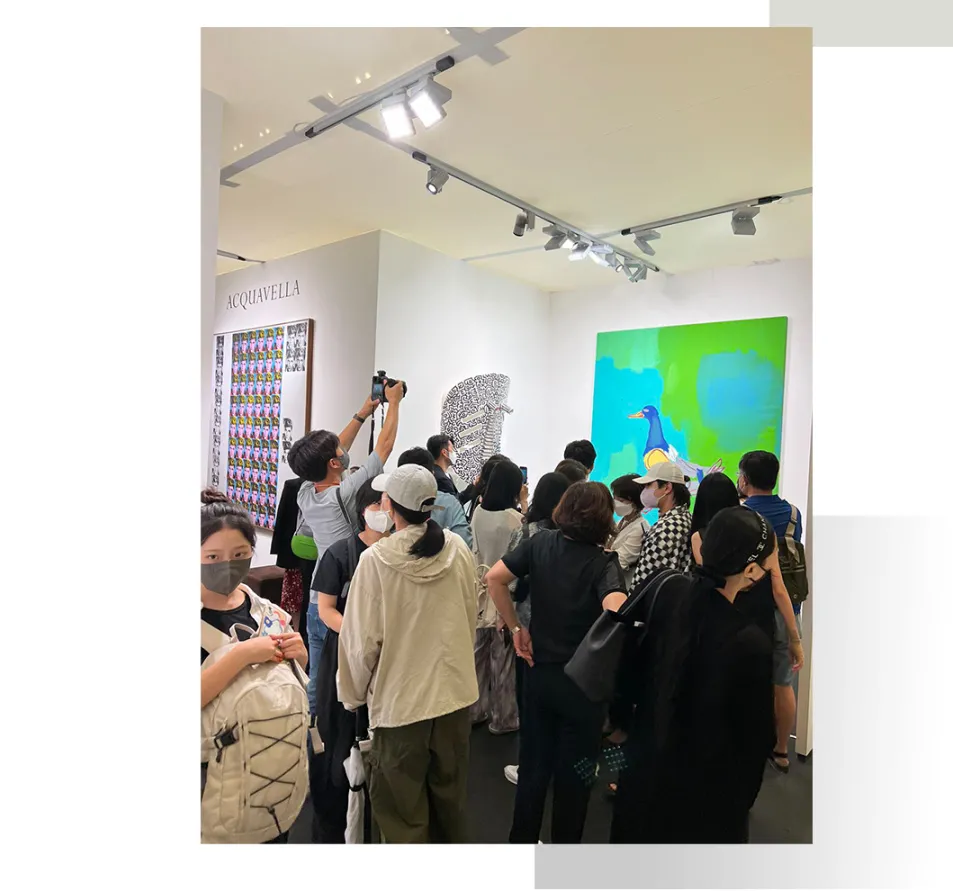
Crowds gather to see Basquiat’s ducks
Although I didn’t encounter many new artists at the fair, Teo Yang commented that Frieze Seoul challenged the aesthetic tastes of local collectors. Unlike previous fairs, which catered to established preferences, Frieze introduced works that were new and exciting to the Korean audience.
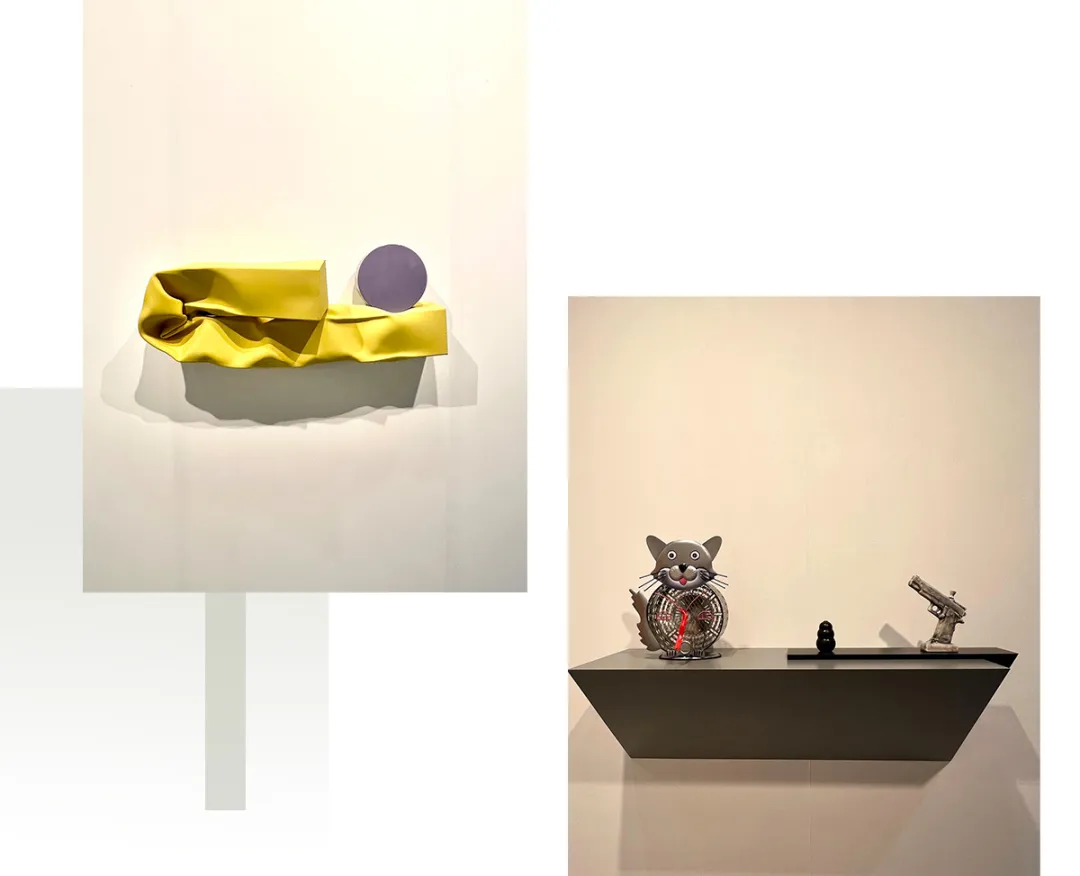
Works from other booths at Frieze
As blue-chip Western galleries establish themselves in Korea, Seoul’s art market has ample room for growth. Jiuhn Kim, founder of DauLang Gallery, noted that while there’s been a surge in blue-chip and emerging artist galleries, the mid-sized gallery sector still has plenty of untapped potential.
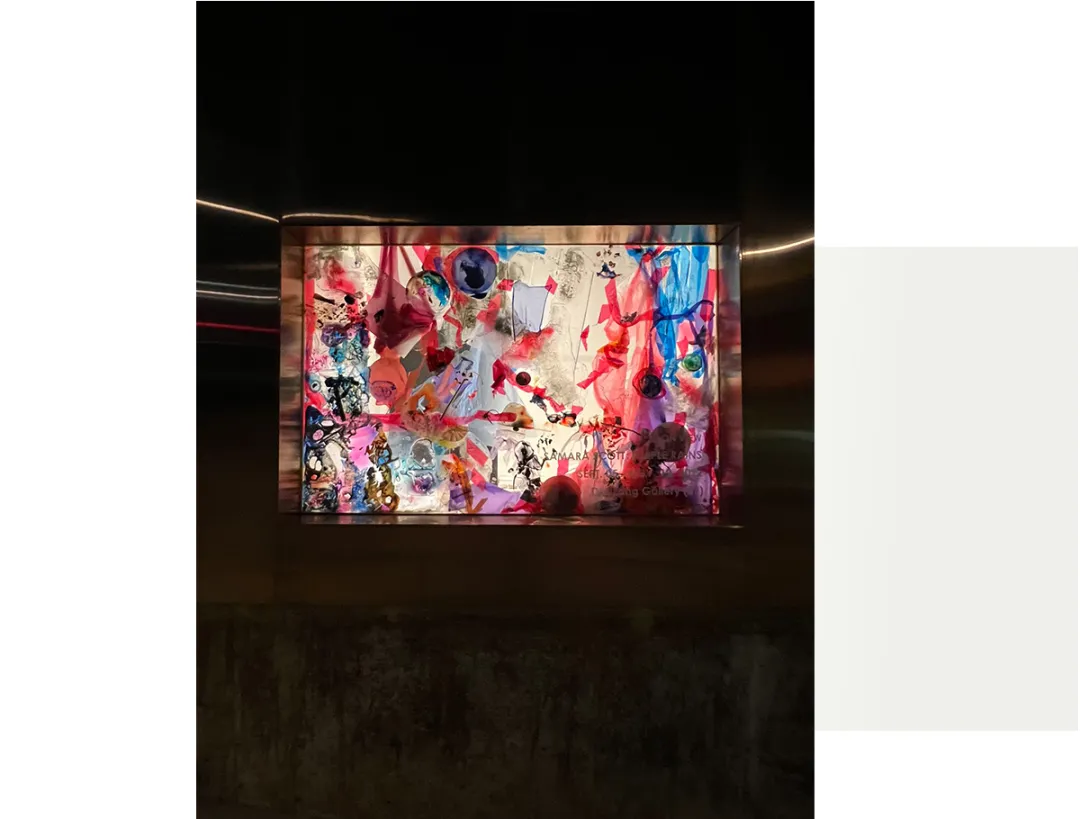
Works by Samara Scott
Due to my visa issues, I arrived in Seoul late and missed out on some early festivities, leaving me to wonder why we continue to chase these trends despite the hurdles. To make up for lost time, I decided to stay a few extra days after the fair, immersing myself in the local culture and gaining fresh inspiration.
The first Frieze Art Week in Seoul was a resounding success, signaling the rise of a new market. What I experienced in Seoul reminded me that it’s the unknown that brings excitement, the unpredictability that keeps us coming back for more. Sometimes, following the trend is the only way to uncover the next big thing.
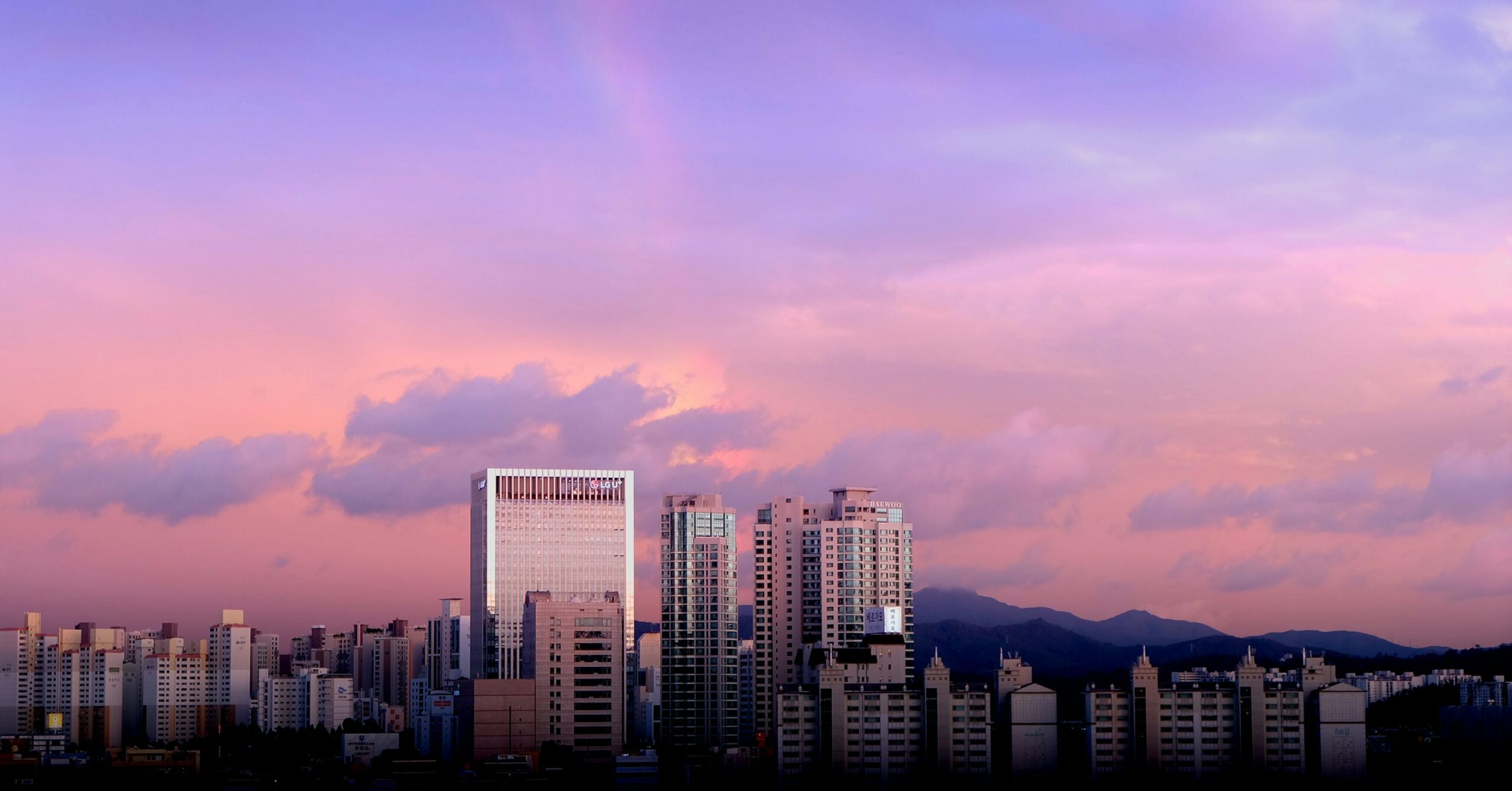
Sunset in Seoul
I recently checked the WeChat group I had joined for moral support during my visa ordeal—it’s now over a hundred members strong. With Korea’s robust support for cultural projects, if they can improve basic infrastructure like visas and transportation, the future is boundless.
Maybe next year, or the year after, when the visa process is less of a hassle and the initial excitement around Seoul’s art scene has settled, I’ll still remember this moment—when the air was thick with opportunity, the energy of Asia was palpable, and the early autumn was scented with barbecue and kimchi.

-the end-
Text: Luning
Copyediting: Rosie
This article was originally published in my Taste column on Artnet.


